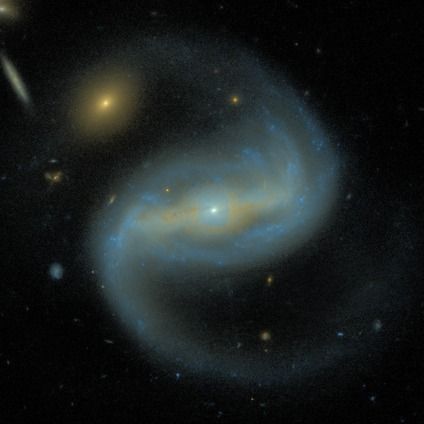
A barred spiral galaxy, possibly merging from the Galaxy Zoo: Hubble project, classified by 47 volunteers.
A barred spiral galaxy, possibly merging, observed with the Hubble Space Telescope in the COSMOS survey.
It is at redshift 0.18 (lookback time 2.30 billion years) with coordinates (150.74612, 2.34301).
47 volunteers classified this galaxy in Galaxy Zoo: Hubble.
12.06.2025 21:18 — 👍 120 🔁 12 💬 5 📌 0
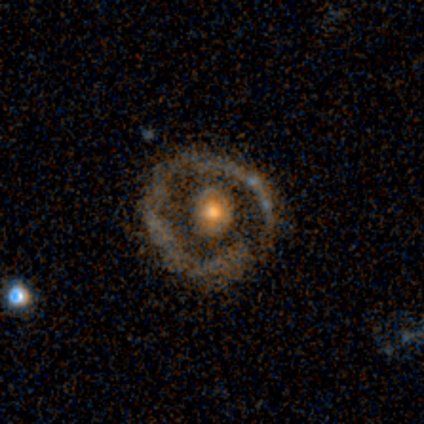
A ring galaxy from the Galaxy Zoo: Hubble project, classified by 140 volunteers.
A ring galaxy, observed with the Hubble Space Telescope in the AEGIS survey.
It is at redshift 0.90 (lookback time 7.52 billion years) with coordinates (215.13736, 53.08949).
140 volunteers classified this galaxy in Galaxy Zoo: Hubble.🔭
22.05.2025 17:22 — 👍 40 🔁 6 💬 0 📌 0
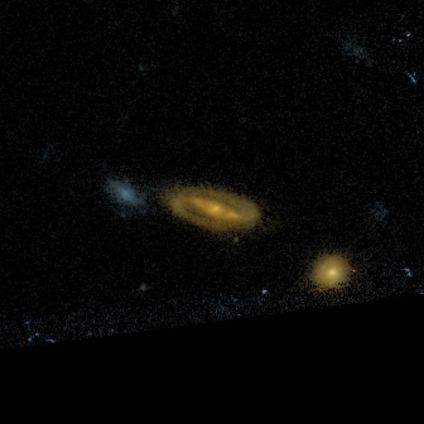
A barred spiral galaxy from the Galaxy Zoo: Hubble project, classified by 49 volunteers.
A barred spiral galaxy, observed with the Hubble Space Telescope in the COSMOS survey.
It is at redshift 0.54 (lookback time 5.50 billion years) with coordinates (149.66278, 1.60950).
49 volunteers classified this galaxy in Galaxy Zoo: Hubble.
06.05.2025 18:33 — 👍 29 🔁 3 💬 0 📌 0
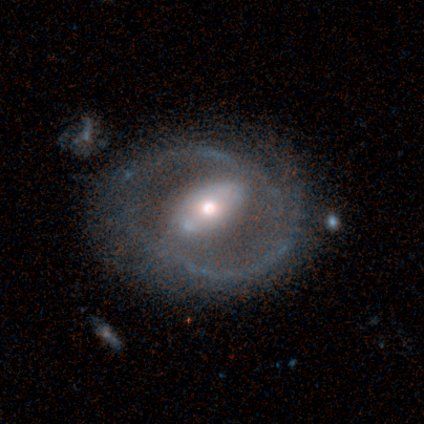
A spiral galaxy with a ring from the Galaxy Zoo: Hubble project, classified by 129 volunteers.
A spiral galaxy with a ring, observed with the Hubble Space Telescope in the GEMS survey.
It is at redshift 0.24 (lookback time 2.94 billion years) with coordinates (53.34991, -27.86085).
129 volunteers classified this galaxy in Galaxy Zoo: Hubble.
26.04.2025 01:53 — 👍 90 🔁 13 💬 0 📌 0
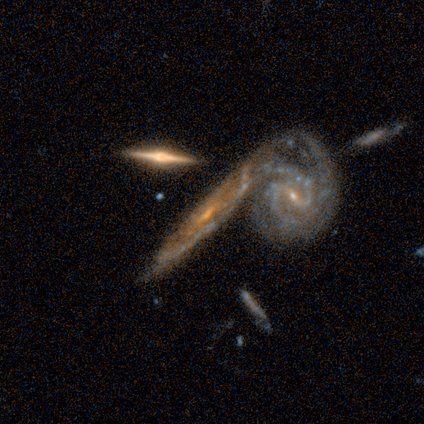
A spiral galaxy in a merger from the Galaxy Zoo: Hubble project, classified by 28 volunteers.
A spiral galaxy in a merger, observed with the Hubble Space Telescope in the AEGIS survey.
It is at redshift 0.51 (lookback time 5.28 billion years) with coordinates (214.95475, 52.87661).
28 volunteers classified this galaxy in Galaxy Zoo: Hubble.
23.03.2025 04:14 — 👍 53 🔁 10 💬 3 📌 1
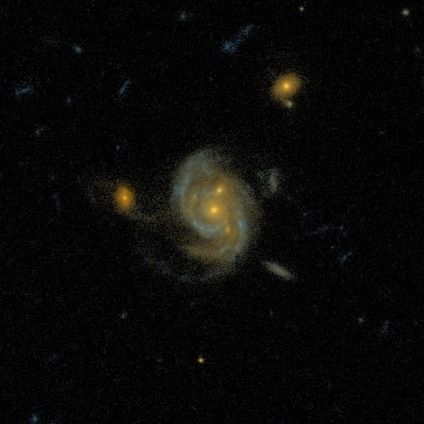
A spiral galaxy in a merger from the Galaxy Zoo: Hubble project, classified by 45 volunteers.
A spiral galaxy in a merger, observed with the Hubble Space Telescope in the COSMOS survey.
It is at redshift 0.44 (lookback time 4.75 billion years) with coordinates (150.09286, 2.73446).
45 volunteers classified this galaxy in Galaxy Zoo: Hubble.
10.03.2025 05:10 — 👍 60 🔁 4 💬 4 📌 0
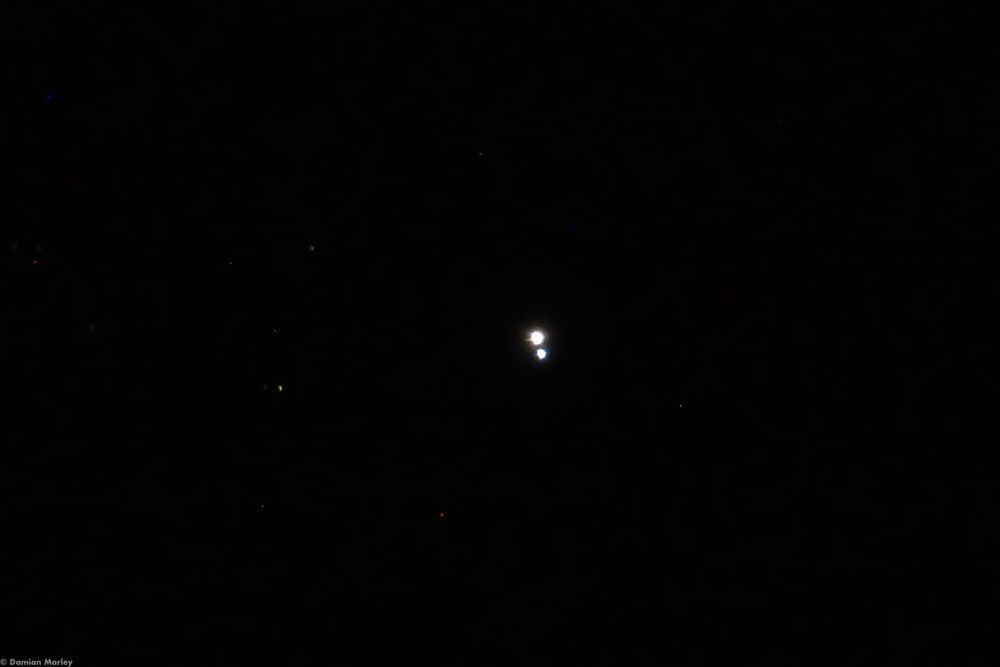
γ Volantis, a binary star system 130 light years away. The brightest star γ2 Volantis is 12 times bigger than our Sun, γ1 and γ2 Volantis are separated by 87 billion kilometres. March 8th 2025. #astrophotography
10.03.2025 06:49 — 👍 15 🔁 2 💬 0 📌 0
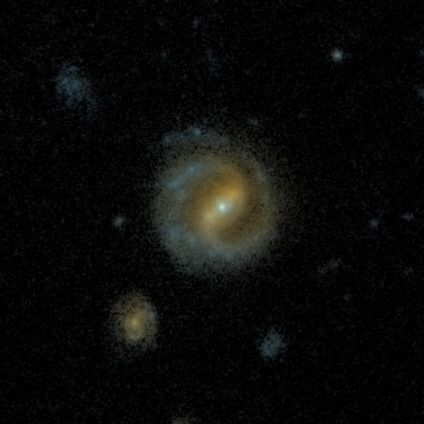
A barred spiral galaxy from the Galaxy Zoo: Hubble project, classified by 44 volunteers.
A barred spiral galaxy, observed with the Hubble Space Telescope in the COSMOS survey.
It is at redshift unknown (lookback time unknown) with coordinates (150.22859, 2.52392).
44 volunteers classified this galaxy in Galaxy Zoo: Hubble.
09.03.2025 05:09 — 👍 92 🔁 11 💬 1 📌 0
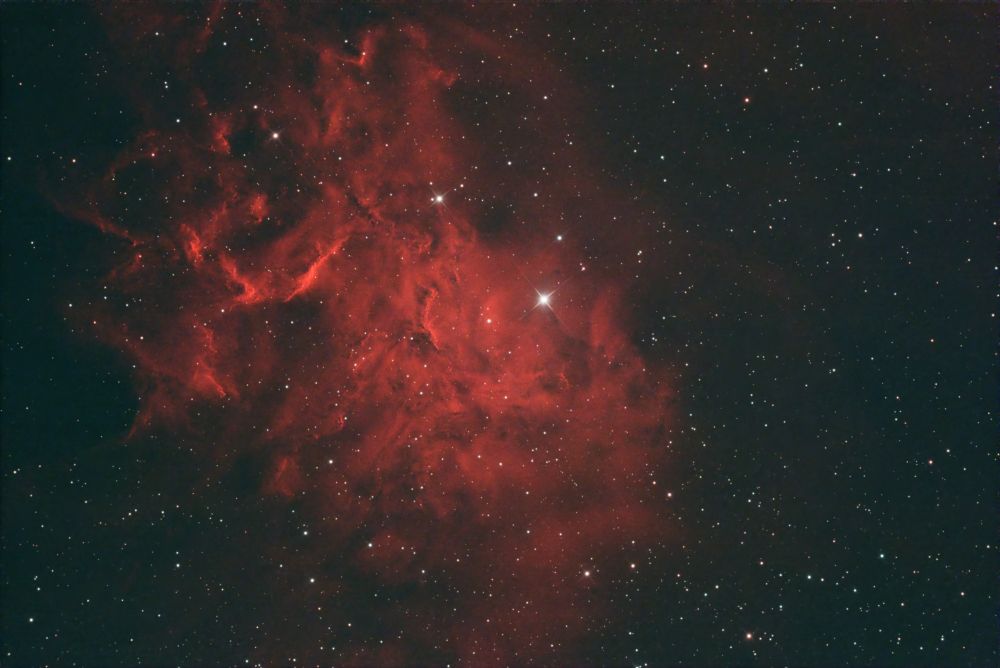
On the black background of outer space, a large, red cloud of gasses roils over most of the left half of the picture, lit by a single bright white star near the center of the image, with dozens of smaller stars dotting the whole scene.
Picture of the day. The Flaming Star Nebula, in the constellation Auriga, is about 1,500 light years away. This is just over two hours of data I collected from somewhere in northern Illinois (I think). #photography #photo #astrophotography #nightsky #night #sky #universe #stars #nebula #red
06.03.2025 22:56 — 👍 34 🔁 6 💬 0 📌 0
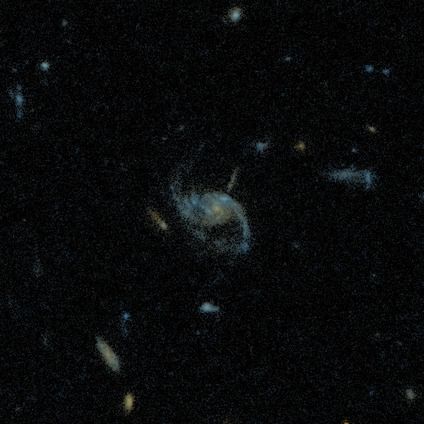
A spiral galaxy from the Galaxy Zoo: Hubble project, classified by 47 volunteers.
A spiral galaxy, observed with the Hubble Space Telescope in the COSMOS survey.
It is at redshift 1.02 (lookback time 8.03 billion years) with coordinates (150.06283, 2.57411).
47 volunteers classified this galaxy in Galaxy Zoo: Hubble.
06.03.2025 22:11 — 👍 60 🔁 9 💬 0 📌 1
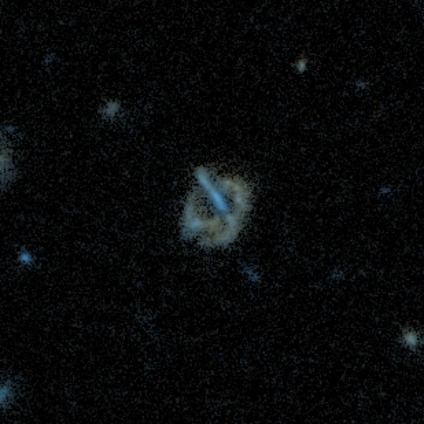
A irregular galaxy from the Galaxy Zoo: Hubble project, classified by 50 volunteers.
An irregular galaxy, observed with the Hubble Space Telescope in the COSMOS survey.
It is at redshift 0.99 (lookback time 7.91 billion years) with coordinates (150.49017, 2.03051).
50 volunteers classified this galaxy in Galaxy Zoo: Hubble.
07.03.2025 00:58 — 👍 37 🔁 5 💬 0 📌 0
 07.03.2025 02:47 — 👍 1 🔁 0 💬 0 📌 0
07.03.2025 02:47 — 👍 1 🔁 0 💬 0 📌 0
if you are a democrat who is retreating on and abandoning trans people, you are evil and throwing all trans people under the bus won’t stop them for coming after you next
07.03.2025 00:54 — 👍 10747 🔁 2026 💬 80 📌 58
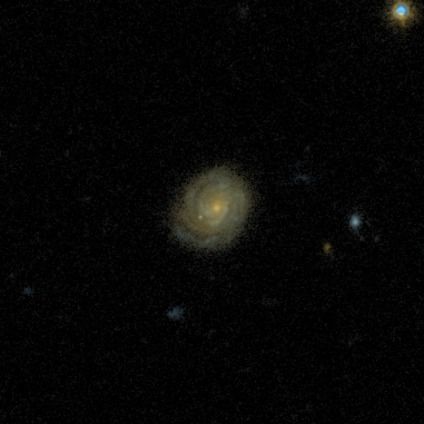
A spiral galaxy from the Galaxy Zoo: Hubble project, classified by 49 volunteers.
A spiral galaxy, observed with the Hubble Space Telescope in the COSMOS survey.
It is at redshift 0.52 (lookback time 5.35 billion years) with coordinates (149.48594, 1.78949).
49 volunteers classified this galaxy in Galaxy Zoo: Hubble.
06.03.2025 07:13 — 👍 30 🔁 5 💬 0 📌 0
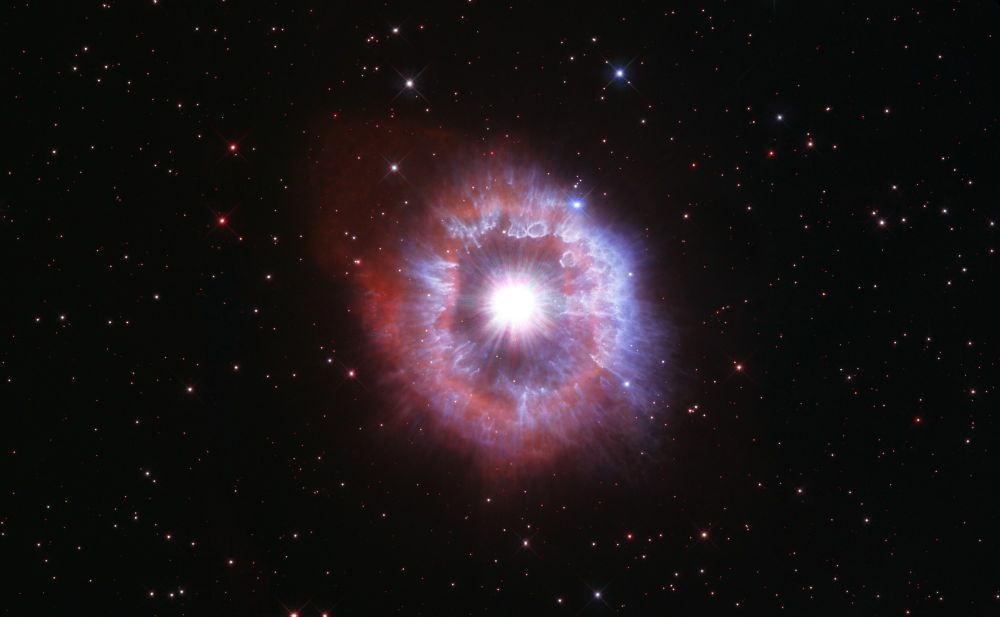
In celebration of the 31st anniversary of the launch of the NASA/ESA Hubble Space Telescope, astronomers aimed the celebrated observatory at one of the brightest stars seen in our galaxy to capture its beauty.
The giant star featured in this latest Hubble Space Telescope anniversary image is waging a tug-of-war between gravity and radiation to avoid self-destruction. The star, called AG Carinae, is surrounded by an expanding shell of gas and dust. The nebula is about five light-years wide, which equals the distance from here to our nearest star, Alpha Centauri.
Hubble's 31st anniversary image of AG Carinae.
Credit:
NASA, ESA and STScI
esahubble.org/images/heic2...
06.03.2025 21:28 — 👍 774 🔁 91 💬 8 📌 1
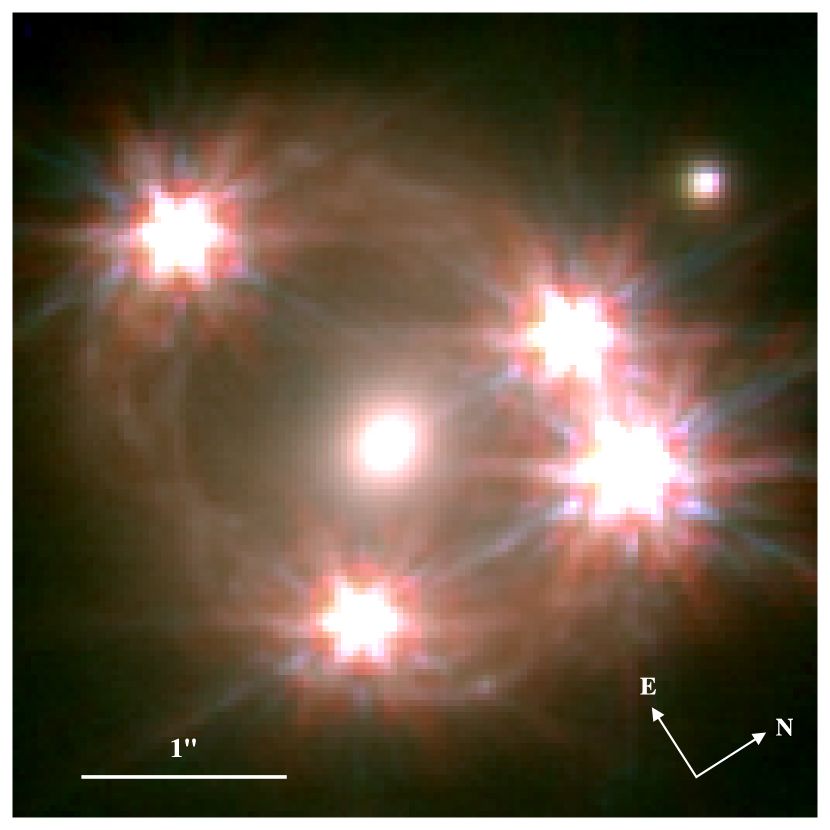
JWST NIRCam color image of WFI2033-4723 (GTO Program #1198; PI: Stiavelli). The F115W band is mapped to the luminosity and blue, F150W to cyan, F277W to yellow, and the F356W band to red. Near the bottom image, there is a bright spot on the lower-right side that maps back to other bluer regions of the ring, indicating it is a multiply-imaged star-forming region (SFR) contained in the z∼1.6 host. Preliminary models place the physical size at ∼150pc located ∼2kpc from the center of the galaxy (assuming flat CDM cosmology with h = 0.7 and m = 0.3).
New NIRCam image of WFI2033-4723, a quadruply-imaged quasar, was released in a recent article.
arxiv.org/abs/2503.000...
05.03.2025 20:40 — 👍 221 🔁 23 💬 3 📌 4
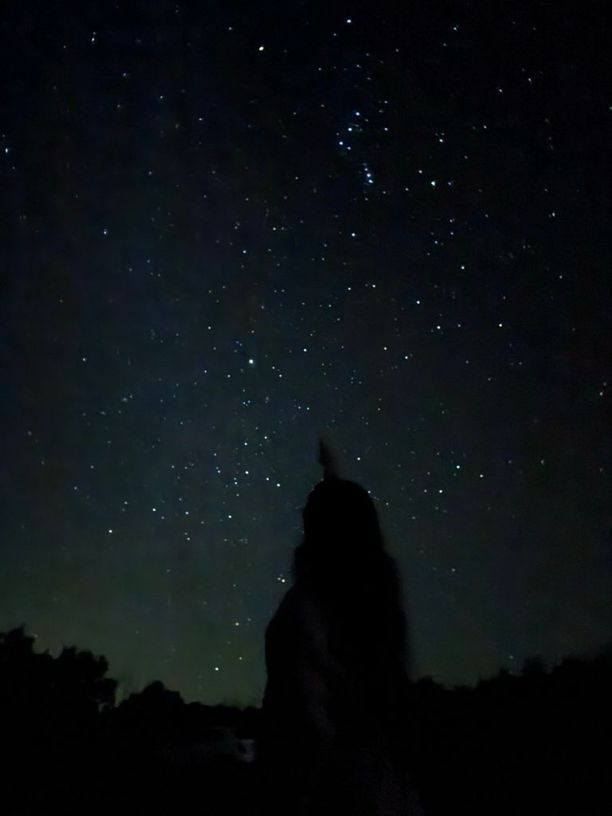
A picture of my silhouette pointing up under a starry night sky.

A picture of the silhouette of my side profile under a starry night sky.
i need to do this again, i was genuinely at my happiest
06.03.2025 02:57 — 👍 657 🔁 45 💬 15 📌 0
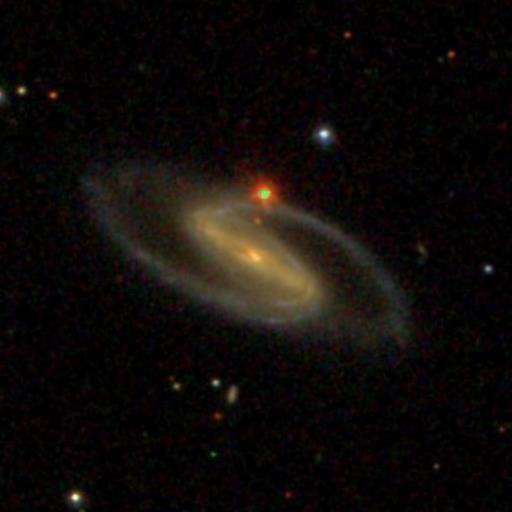
A barred spiral galaxy from the Galaxy Zoo 2 project, classified by 45 volunteers.
A barred spiral galaxy, observed with the Apache Point 2.5m Telescope in the SDSS survey.
It is at redshift 0.028 (lookback time 397.0 million years) with coordinates (231.46912, 7.81962).
45 volunteers classified this galaxy in Galaxy Zoo 2.
04.03.2025 17:11 — 👍 53 🔁 4 💬 0 📌 1
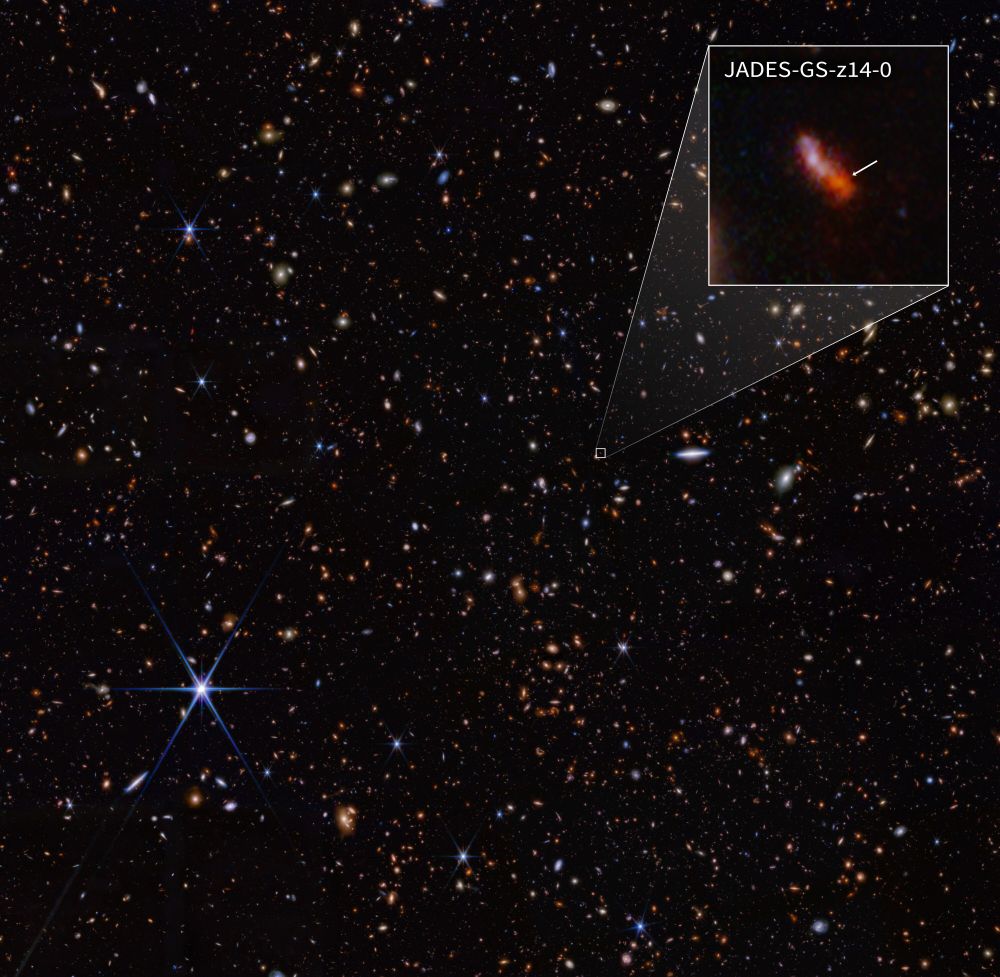
A field of thousands of small galaxies of various shapes and colors on the black background of space. A bright, foreground star with diffraction spikes is at lower left. Near the image center, a tiny white box outlines a region and two diagonal lines lead to a box in the upper right. Within the box is a banana-shaped blob that is blueish-red in one half and distinctly red in the other half. An arrow points to the redder portion and is labeled “JADES GS z 14 – 0”.
Most distant object known to humanity - JADES-GS-z14-0.
NASA, ESA, CSA, STScI, B. Robertson (UC Santa Cruz), B. Johnson (CfA), S. Tacchella (Cambridge), P. Cargile (CfA)
01.03.2025 00:03 — 👍 1513 🔁 151 💬 41 📌 18
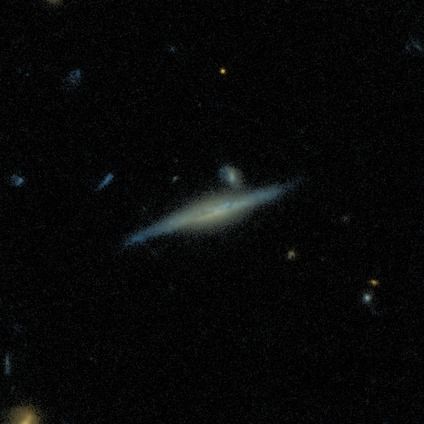
A edge-on disk galaxy, possibly merging from the Galaxy Zoo: Hubble project, classified by 59 volunteers.
An edge-on disk galaxy, possibly merging, observed with the Hubble Space Telescope in the COSMOS survey.
It is at redshift 0.09 (lookback time 1.22 billion years) with coordinates (150.61401, 1.75096).
59 volunteers classified this galaxy in Galaxy Zoo: Hubble.
03.03.2025 12:23 — 👍 15 🔁 1 💬 1 📌 0
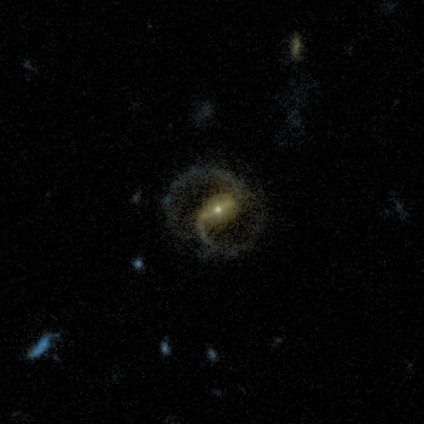
A barred spiral galaxy from the Galaxy Zoo: Hubble project, classified by 55 volunteers.
A barred spiral galaxy, observed with the Hubble Space Telescope in the COSMOS survey.
It is at redshift 0.67 (lookback time 6.33 billion years) with coordinates (150.24453, 2.07585).
55 volunteers classified this galaxy in Galaxy Zoo: Hubble.
20.02.2025 02:14 — 👍 22 🔁 3 💬 0 📌 0
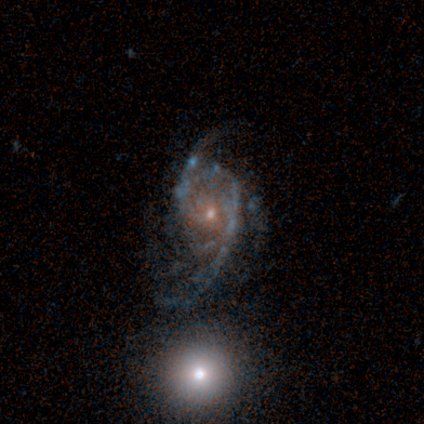
A spiral galaxy, possibly merging from the Galaxy Zoo: Hubble project, classified by 31 volunteers.
A spiral galaxy, possibly merging, observed with the Hubble Space Telescope in the GEMS survey.
It is at redshift 0.51 (lookback time 5.28 billion years) with coordinates (53.15303, -27.62379).
31 volunteers classified this galaxy in Galaxy Zoo: Hubble.
20.02.2025 11:10 — 👍 146 🔁 11 💬 4 📌 0
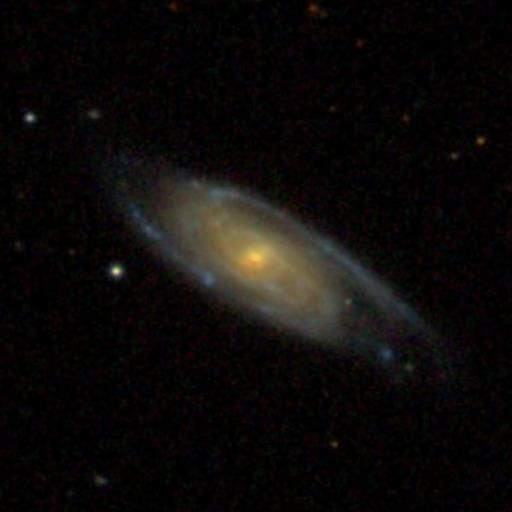
A spiral galaxy from the Galaxy Zoo 2 project, classified by 39 volunteers.
A spiral galaxy, observed with the Apache Point 2.5m Telescope in the SDSS survey.
It is at redshift 0.018 (lookback time 257.3 million years) with coordinates (155.60172, 3.99735).
39 volunteers classified this galaxy in Galaxy Zoo 2.🔭
22.02.2025 02:09 — 👍 57 🔁 12 💬 0 📌 0
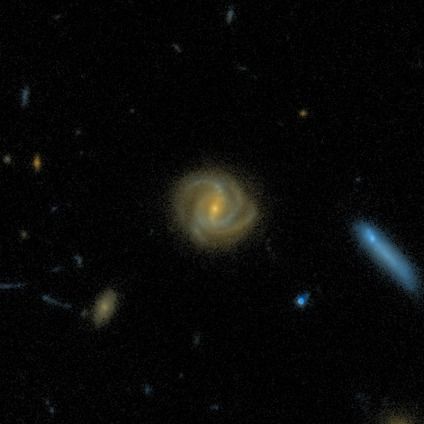
A barred spiral galaxy from the Galaxy Zoo: Hubble project, classified by 50 volunteers.
A barred spiral galaxy, observed with the Hubble Space Telescope in the COSMOS survey.
It is at redshift 0.35 (lookback time 4.00 billion years) with coordinates (149.97569, 2.46144).
50 volunteers classified this galaxy in Galaxy Zoo: Hubble.
23.02.2025 08:14 — 👍 20 🔁 7 💬 0 📌 0
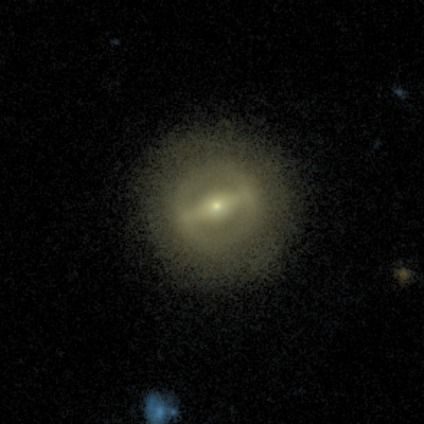
A ring galaxy from the Galaxy Zoo: Hubble project, classified by 47 volunteers.
A ring galaxy, observed with the Hubble Space Telescope in the COSMOS survey.
It is at redshift 0.11 (lookback time 1.47 billion years) with coordinates (150.51635, 2.56990).
47 volunteers classified this galaxy in Galaxy Zoo: Hubble.
24.02.2025 12:23 — 👍 55 🔁 5 💬 0 📌 0
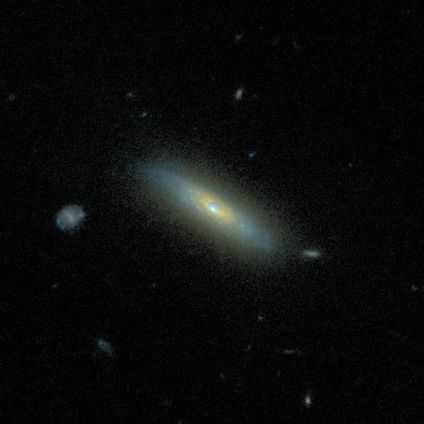
A galaxy with non-smooth features from the Galaxy Zoo: Hubble project, classified by 48 volunteers.
A galaxy with non-smooth features, observed with the Hubble Space Telescope in the COSMOS survey.
It is at redshift unknown (lookback time unknown) with coordinates (149.83376, 2.81331).
48 volunteers classified this galaxy in Galaxy Zoo: Hubble.
24.02.2025 18:16 — 👍 10 🔁 2 💬 1 📌 0
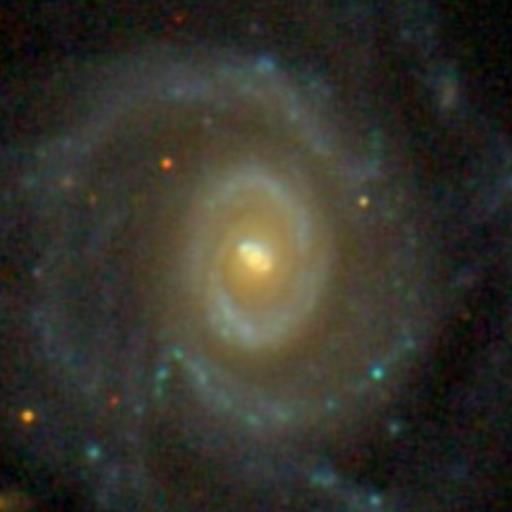
A spiral galaxy with a ring from the Galaxy Zoo 2 project, classified by 44 volunteers.
A spiral galaxy with a ring, observed with the Apache Point 2.5m Telescope in the SDSS survey.
It is at redshift 0.008 (lookback time 114.4 million years) with coordinates (162.99179, 3.79206).
44 volunteers classified this galaxy in Galaxy Zoo 2.
27.02.2025 00:57 — 👍 43 🔁 6 💬 1 📌 0
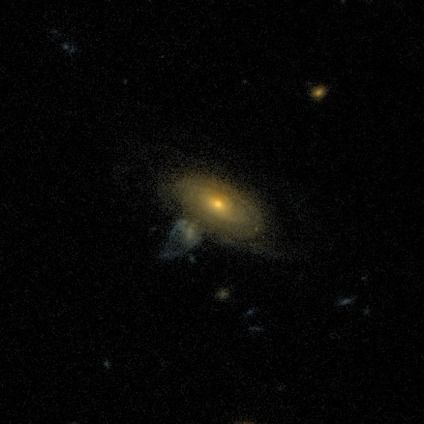
A spiral galaxy in a merger from the Galaxy Zoo: Hubble project, classified by 49 volunteers.
A spiral galaxy in a merger, observed with the Hubble Space Telescope in the COSMOS survey.
It is at redshift 0.37 (lookback time 4.17 billion years) with coordinates (149.88627, 1.94186).
49 volunteers classified this galaxy in Galaxy Zoo: Hubble.
26.02.2025 07:12 — 👍 14 🔁 1 💬 1 📌 1
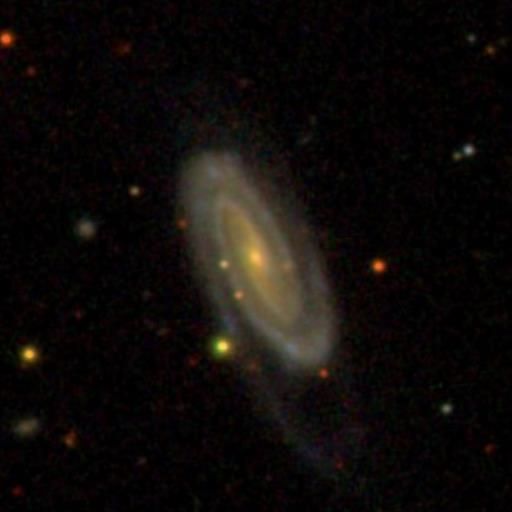
A spiral galaxy from the Galaxy Zoo 2 project, classified by 39 volunteers.
A spiral galaxy, observed with the Apache Point 2.5m Telescope in the SDSS survey.
It is at redshift 0.028 (lookback time 397.0 million years) with coordinates (226.25435, 5.79678).
39 volunteers classified this galaxy in Galaxy Zoo 2.
25.02.2025 06:17 — 👍 48 🔁 10 💬 0 📌 1
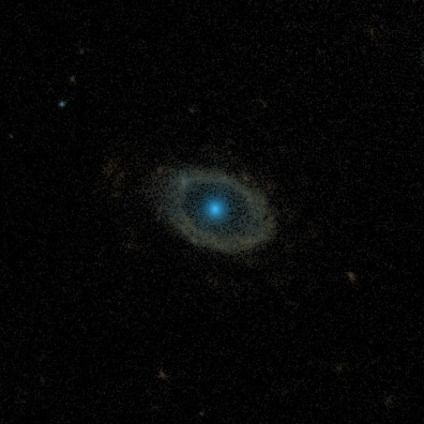
A ring galaxy from the Galaxy Zoo: Hubble project, classified by 38 volunteers.
A ring galaxy, observed with the Hubble Space Telescope in the COSMOS survey.
It is at redshift unknown (lookback time unknown) with coordinates (149.72790, 2.31586).
38 volunteers classified this galaxy in Galaxy Zoo: Hubble.
23.02.2025 18:14 — 👍 69 🔁 11 💬 3 📌 0











 07.03.2025 02:47 — 👍 1 🔁 0 💬 0 📌 0
07.03.2025 02:47 — 👍 1 🔁 0 💬 0 📌 0

















